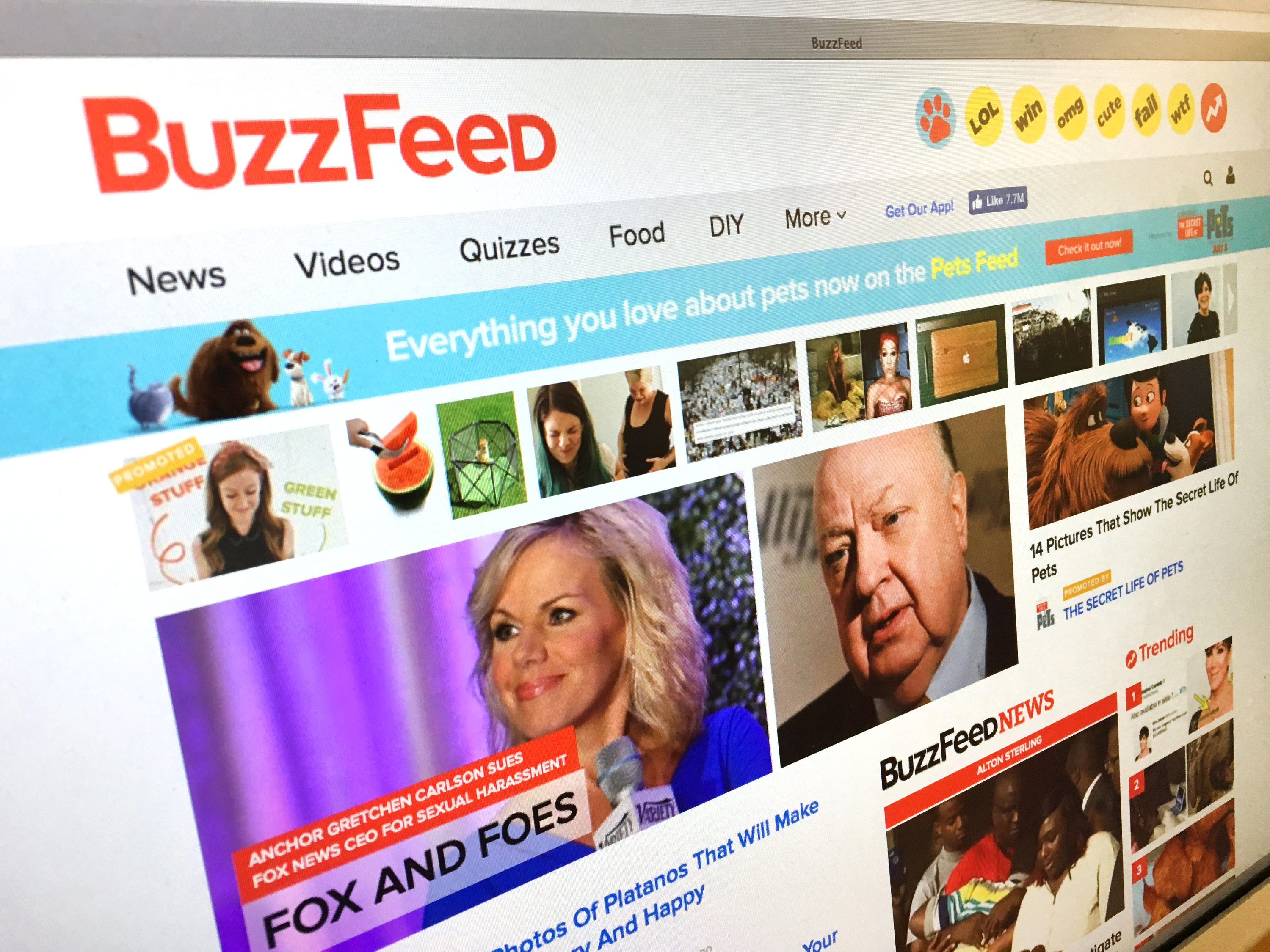"Falsehood flies, and truth comes limping after it," Jonathan Swift once wrote.
BuzzFeed wants to tighten up the race.
The purveyor extraordinaire of viral content has enlisted debunking specialist Craig Silverman to track down and expose the myriad hoaxes, unfounded rumors and untrue stories that circulate widely on the Internet and social media.
A key element of Silverman's mission is to find a way for the corrected version to catch up to the phony one, to make debunking go viral. And what better place to do it than at the world champion of viral content?
It's no small challenge. Ask any political fact-checker how hard it is for the truth to overtake the bogus campaign trail claim. The shelf life of poppycock is depressingly long.
This is hardly a new phenomenon. In 2003, 53% of respondents in an April CBS/New York Times poll said Saddam Hussein was "personally involved" in the 9/11 attacks, although he totally wasn't.
So how do you spread the word more effectively? "No one has cracked it, and I'm not claiming we will," Silverman says. "We'll try a lot of stuff and see what works for us."
![Rieder: BuzzFeed a burgeoning journalistic force [oembed : 86767388] [oembed : 86767388] [oembed : 86767388] [oembed : 86767388] [oembed : 86767388] [oembed : 86767388] [oembed : 86767388] [oembed : 86767388] [oembed : 86767388] [oembed : 86767388] [oembed : 86767388] [oembed : 86767388]](/Portals/_default/Skins/PrestoLegacy/CommonCss/images/smartembed.png)
And the need for fighting the battle against disinformation and misinformation is greater than ever in a world in which some sites live to publish phony stories.
"There have always been hoaxes and rumors, but they are much more common in today's world," Silverman says. "The false stuff gets traction. It contributes to stereotypes and influences what we think. If we're not knocking it down, it contributes to a more fractious society."
And, after all, sorting out the truth is what journalism is supposed to be all about. "This is our job," Silverman says. "It's important to think about this on a daily basis."
He says the mission is complicated by the fact that people just don't seem to share the corrective article nearly as much as the splashy but incorrect original story. "Hoaxes are better crafted to share," he says. "Debunkers are seen as spoilsports."
Like Jonathan Swift, he believes "bad information gets off to a head start. You have sites consciously publishing bad stuff that are not constrained by facts. And people want to believe." There really are people who think there are stories that are too good to check.
The new role is a perfect fit for the Toronto-based Silverman, who more than a decade ago launched a blog that focused on newspaper corrections and later wrote a book on the subject. Then, about eight years ago, he noticed that fake news was starting to emerge, "and social media was throwing gasoline on it." He turned his attention to that phenomenon.
In the fall of 2014, Silverman launched Emergent, a website that focused on analyzing sketchy Internet memes. It caught the attention of Ben Smith, BuzzFeed's editor in chief. Silverman joined to head up BuzzFeed's Canada operation, but the idea from the get-go was to move into the debunking business. He's been doing some truth-squadding on a part-time basis; now his passion will be his metier.
![Rieder: Waging war on Internet nonsense [oembed : 86766772] [oembed : 86766772] [oembed : 86766772] [oembed : 86766772] [oembed : 86766772] [oembed : 86766772] [oembed : 86766772] [oembed : 86766772] [oembed : 86766772] [oembed : 86766772] [oembed : 86766772] [oembed : 86766772]](/Portals/_default/Skins/PrestoLegacy/CommonCss/images/smartembed.png)
Silverman seesBuzzFeedas the ideal venue for his crusade to determine how to make the correction catch up to the nonsense. It has a massive audience ("more than 7 billion monthly global content views across platforms," the company says), it's known for its expertise in how the Internet and social media work, and it has a culture that encourages trying new things.
"I'm getting to do this from a really large platform," Sliverman says. "This is potentially a really powerful thing."
Asked about recent greatest hits, he mentions his shredding of a story from the East Asia Tribune claiming that there was a family in Singapore whose long-standing tradition was for relatives to watch as men lose their virginity. The Tribune says the story has been viewed 500,000 times. And it's total hogwash.
In his new role, Silverman aims to make debunking part of theBuzzFeedculture, part of all its international operations (BuzzFeed is in 11 countries) and all of its beats. Soon, he hopes BuzzFeed will be discrediting phony memes in many languages, not just English.
And he aims to try a variety of approaches: fake news quizzes, humor when it's appropriate, hard news on other occasions, and who knows what else.
"We cover the Internet aggressively," Silverman says. "When we spot hoaxes, we should play a role in calling it out."
The goal, he adds, should be "to make sure you don't follow anything that's false."
Follow USA TODAY columnist Rem Rieder on Twitter @remrieder


![XXX _BUZZFEED_11404.JPG [image : 86774286]](http://www.gannett-cdn.com/media/2016/07/06/USATODAY/USATODAY/636034183437466153-XXX-buzzfeed-11404.JPG)
